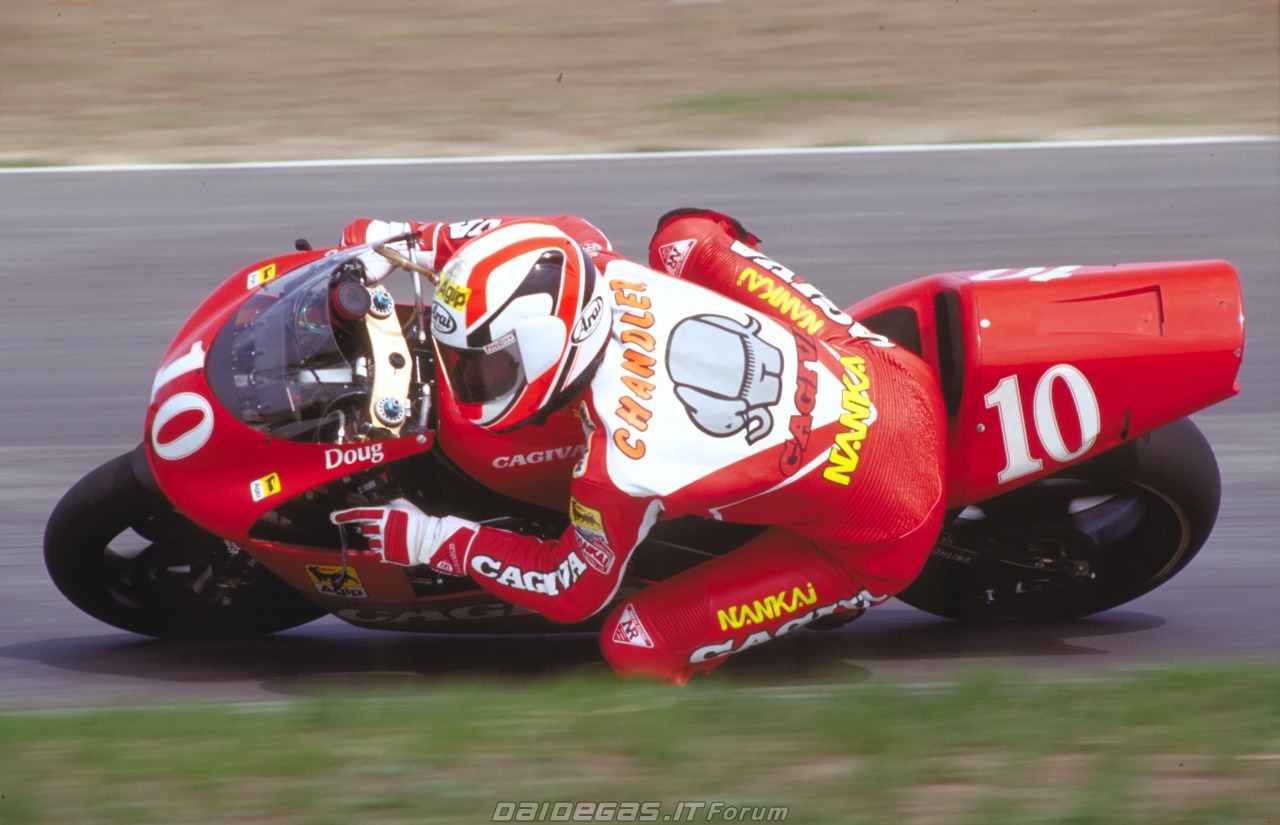




On a hot and humid Florida afternoon, Doug Chandler wins the inaugural Camel Motorcycle Grand Prix of Miami.
Riding for Muzzy Kawasaki, Doug Chandler wins his third AMA Superbike race in a row, this race just happens to be the inaugural Camel Motorcycle Grand Prix of Miami. Doug beat his Kawasaki teammate Scott Russell by 19 seconds, in front of an estimated crowd of 20,000 in Bicentennial Park.
He would be in the lead during all 31 laps around the 1.51-mile temporary circuit through downtown Miami. The event, which had been scheduled to last 40 laps, was halted due to a breakdown in communication with workers around the 11-turn course. Race officials blamed a blown fuse for the communications snafu.
Chandler is one of only four riders in AMA racing history to win the AMA Grand Slam, representing National wins at a mile, half-mile, short track, TT and road race.
He was inducted into the AMA Motorcycle Hall of Fame in 2006.
Today in motorcycle history proudly supports the National Association for Bikers with a Disability (NABD). www.nabd.org.uk



























